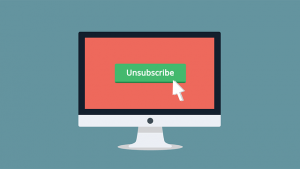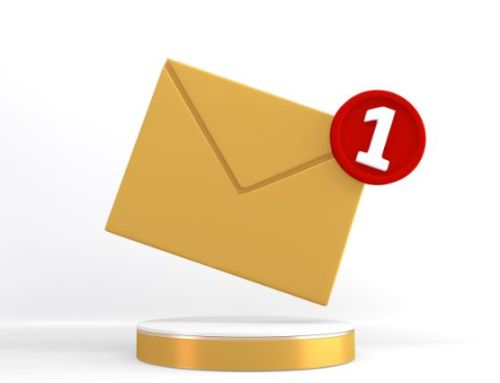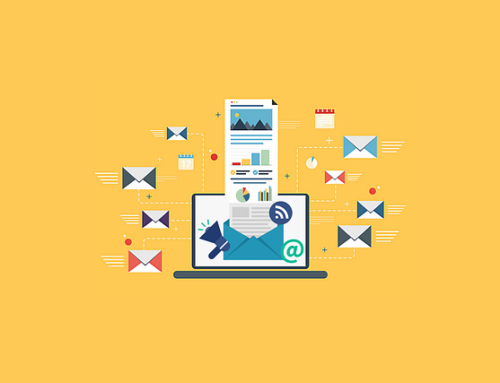Email marketing is one of the most important marketing tactics for businesses both large and small, yet most companies don’t use it correctly. When done right, email marketing can help you attract new customers, engage existing customers, and even reconnect with those no longer doing business with you. When done incorrectly, email marketing wastes money, time and resources, and can negatively impact your marketing efforts overall. Here are a few email marketing mistakes and tips on how to get it right.
What is email marketing?
In the broadest sense, email marketing uses email to promote a product or services. More specifically, it’s a marketing tactic used to develop relationships with potential customers and/or clients. It’s essentially the same as direct mail except that instead of sending mail through the postal service, messages are sent electronically via email.
What are common email marketing mistakes?
While using email for your marketing efforts can be very effective, there are plenty of opportunities along the way to get it wrong. From building a list to follow-up after an email is sent, there are several email marketing mistakes to avoid.
Buying email lists
 It’s surprising how many small business marketers still buy email lists. It’s an understandable mistake, since buying a list can save a lot of time. Unfortunately, the time you save by not building your email list organically harms your company’s bottom line, reputation, email reputation, and other things that make your business strong. When you buy an email list, regardless how reputable the email list company is, you won’t get qualified contacts since they never asked to hear from you specifically. You also increase your chances of getting marked as spam; if you send a message to people who did not subscribe to receive such messages from you, you are sending spam and people WILL report it. In addition, you won’t have an exclusive readership (remember, this was a purchased list, and likely you’re not the only one who bought the list). The result? Your engagement rate will be low, and likely your brand will suffer. Having a huge email list means nothing if it’s full of people who never wanted to hear from you in the first place. Never buy an email list. Buying email lists for your marketing efforts is a mistake. You want to build your list organically. Here are a few ideas on how to do that:
It’s surprising how many small business marketers still buy email lists. It’s an understandable mistake, since buying a list can save a lot of time. Unfortunately, the time you save by not building your email list organically harms your company’s bottom line, reputation, email reputation, and other things that make your business strong. When you buy an email list, regardless how reputable the email list company is, you won’t get qualified contacts since they never asked to hear from you specifically. You also increase your chances of getting marked as spam; if you send a message to people who did not subscribe to receive such messages from you, you are sending spam and people WILL report it. In addition, you won’t have an exclusive readership (remember, this was a purchased list, and likely you’re not the only one who bought the list). The result? Your engagement rate will be low, and likely your brand will suffer. Having a huge email list means nothing if it’s full of people who never wanted to hear from you in the first place. Never buy an email list. Buying email lists for your marketing efforts is a mistake. You want to build your list organically. Here are a few ideas on how to do that:
- Add an opt-in link in your signature line of your company email
- Add a sign-up form on your website
- Add an email sign-up tab on Facebook
- Offer email-only discounts, specials or info that entice people to want to sign up
- Promote your email list through your social media channels
Need more ideas to build your email list? Here are 40.
Not segmenting email lists
Email marketing is not a one-message-fits-all effort. Many companies send the exact same message to prospects, current clients and past clients, when those messages should be tailored to three different audiences. More targeted messages get more results. Not segmenting lists to send more targeted email messages is only going to make your email marketing message ineffective.
Sending emails without testing them first
 Most basic email marketing platforms allow you to test your email message before you send it out to your hopefully qualified, earned not bought list, yet many small business marketers don’t take full advantage of that. That’s a mistake! You need to test your email to see how it will look on mobile devices, on a desktop, in Gmail, Yahoo and Outlook. Do your images appear? Do your URLs work? How about your grammar, spelling and punctuation? Constant Contact has a tool that helps check links, grammar, and spelling, or you can use a more in-depth tool like Email Analysis. Testing is critical and should always be done!
Most basic email marketing platforms allow you to test your email message before you send it out to your hopefully qualified, earned not bought list, yet many small business marketers don’t take full advantage of that. That’s a mistake! You need to test your email to see how it will look on mobile devices, on a desktop, in Gmail, Yahoo and Outlook. Do your images appear? Do your URLs work? How about your grammar, spelling and punctuation? Constant Contact has a tool that helps check links, grammar, and spelling, or you can use a more in-depth tool like Email Analysis. Testing is critical and should always be done!
Putting no thought into subject lines
Email subject lines can make or break your email marketing. Many great emails never get opened because their subject lines are ineffective, boring, or stale. Still, many marketers put little thought into their subject lines, which is a big mistake! The subject line is one of the first things a recipient will see, so it’s essential that yours is the one that stands out and catches their attention. Here are a few suggestions regarding subject lines:
- Keep it short and to the point. The key to a powerful subject line is one that quickly and summarizes the nature of your email in as few words as possible.
- Give the reader a reason to open your email. Entice them with a benefit for opening the email to learn more.
- Don’t mislead the reader or use obvious “click bait”. False promises or ridiculous claims will get your email deleted quickly.
- Craft your subject line to your audience. People open emails because they’ll benefit from the content in the form of entertainment, education or engagement.
Need ideas on great subject lines? Here are 36 email marketing subject lines to get you started.
Making it too hard to unsubscribe
 Sometimes people decide they no longer want to hear from you. It happens and when it does, if you make it too hard (or impossible) to unsubscribe from your list, people get annoyed. Annoyed people mark your now unwanted emails as spam, and that is bad for your company. Your sender reputation will begin to deteriorate, and your deliverability will suffer. Your emails should already include an option to allow customers to unsubscribe. Not only is it a basic part of unsubscribe best practices, but it’s required by law under the CAN-SPAM Act. You should include unsubscribe information in the footer of the email, and if you want to make the process clear and easy for your subscribers, you should also include a link in the email header. If someone doesn’t want to be on your list, you don’t want to be emailing them anyway. Let them easily unsubscribe to keep your list populated with willing email recipients.
Sometimes people decide they no longer want to hear from you. It happens and when it does, if you make it too hard (or impossible) to unsubscribe from your list, people get annoyed. Annoyed people mark your now unwanted emails as spam, and that is bad for your company. Your sender reputation will begin to deteriorate, and your deliverability will suffer. Your emails should already include an option to allow customers to unsubscribe. Not only is it a basic part of unsubscribe best practices, but it’s required by law under the CAN-SPAM Act. You should include unsubscribe information in the footer of the email, and if you want to make the process clear and easy for your subscribers, you should also include a link in the email header. If someone doesn’t want to be on your list, you don’t want to be emailing them anyway. Let them easily unsubscribe to keep your list populated with willing email recipients.
Not measuring results
There are a few basic email marketing metrics that every small business marketer should know. At the very least, you should know your email marketing open rate, click through rate, and conversion rate. How many people actually opened your email? Of those emails opened, how many people clicked through to your website? Of those, how many people took the desired action you wanted? If you don’t even know these basic metrics, you have no idea if your email marketing efforts are effective or if you’re getting the ROI you hoped for. Savvy small business marketers will dive deeper. Here are 17 email marketing metrics to determine how well your marketing is working.
Not using an email marketing system
Many of the “mistakes” highlighted above can be avoided by using an email marketing system like Mailchimp, Vertical Response or Constant Contact. Several email marketing platforms are very inexpensive, and there are even a few free options, yet some small businesses continue to email straight from their own email address. Big mistake! You’re unable to test your emails first, you can’t measure the results, and likely the deliverability is poor. Sending a message in BCC to a large number of recipients is a particularly bad idea. Using that tactic basically makes you a spammer. Don’t be that person!
Email marketing is as powerful as ever! If you’re not using it as part of your small business marketing efforts, it’s time to get on board, but make sure you’re doing it the right way and avoid these typical email marketing mistakes.
- Marketing Tactics That Your Small Business Can Do for Free - January 10, 2024
- How to Create Images for Your Small Business Website - December 6, 2023
- How Small Businesses Benefit from Referrals - November 6, 2023





